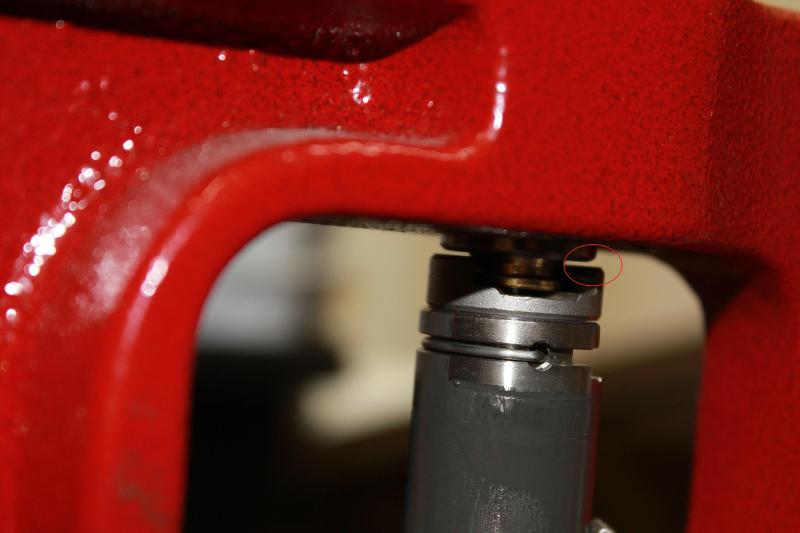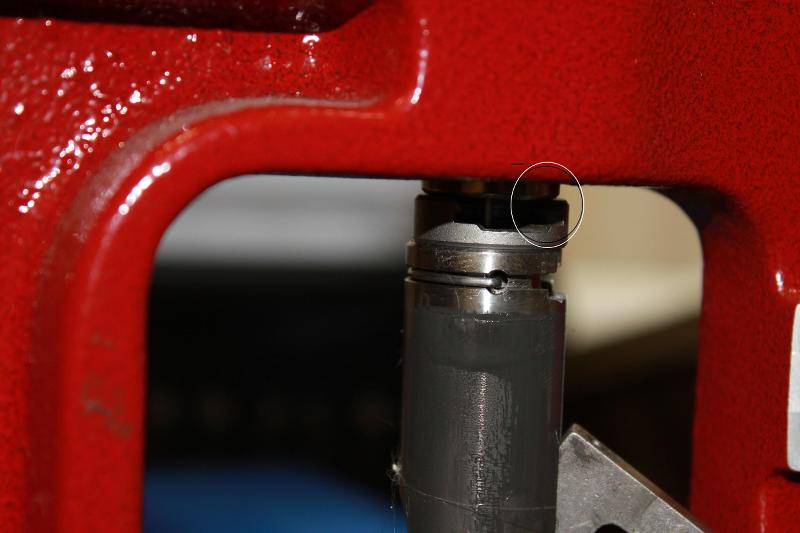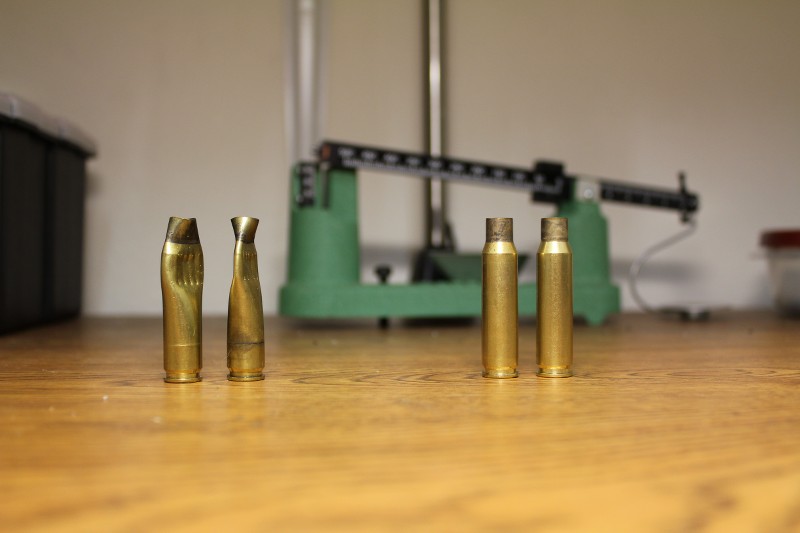I'll start by saying two things . I don't and have never sized a belted case . I do believe I have a good understanding of sizing cases .
A reloading friend and I talked about head space earlier today. I asked him how he knows, on his 308s, his head space is proper after sizing. He said he has to trust the die and the manufacturer's instructions. It seems the same would apply to the 300 Weatherby or any other bottle neck case. Some of us don't want to invest in an electron microscope to ensure head space is correct
Trusting the die manufacture instructions to be correct for your rifle or any one rifle is fine but not necessarily right for your rifle , There is a difference .
When I sized my cases ( 308 ) per Reddings instruction which is the same as you described . This is what my shell holder and die looked like when the ram is fully up with cam over , they are touching with no gap .
This is what my cases looked like after only 3 firings because the shoulders were being set back .008+ causing excessive head clearance . I crushed the cases on the left with pliers to be sure I never use them again . Notice the cases on the left have head separation at the web after only being loaded 3 times per instructions . The cases on the right have been loaded 8 times
What was the difference in how my sizing die was set up for the cases on the right . I adjusted the die up to only push the shoulder back .002 . That looks like this when the ram is fully up . Notice the gap between the shell holder and die .

The die manufacturers instructions are to insure the cases sized per there instructions will chamber in any rifle . That means the cases must be sized small enough to fit in the SAAMI minimum spec chambers . Therefore if you have the avg factory chamber . It's going to be somewhere in the middle of SAAMI specs . Meaning if you're sizing your cases per the instructions . You are likely sizing to minimum spec and are sizing your cases down to much . You will not get the case life you ultimately could get when doing so ( See 2nd pic ) The gap in the picture above is how much my cases were likely stretching each time fired when sized per Reddings instructions . Trusting the manufacturers instructions is only going to get you a cartridge that chambers in your rifle and goes bang . It's not likely going to size the case best for your rifle and most likely reduce case life .
If you are only loading these once or twice then you're likely fine but I have read about standard belted dies not sizing all the way to the belt and that causing issues . I can see that being even a bigger issue if your die is not making hard contact with the shell holder .
So I ask this because I don't have nor ever used the collet die you're talking about . Is there a way to only use it to size the case just above the belt and not the neck ? This way you can full length size your case only bumping the shoulder back .002 or so . Then size the case near the belt with the collet die to insure it chambers . This should allow you to headspace off the shoulder and still size down the bulge .
You said the cases you are sizing now were not fired from your rifle ??? If that's the cases . Maybe your rifle does not bulge the cases at the belt and just FL sizing after they have been fired in your rifle will be all that's needed .



